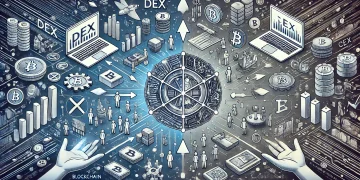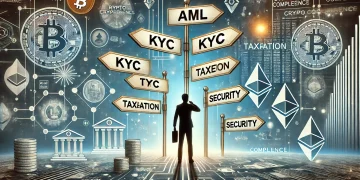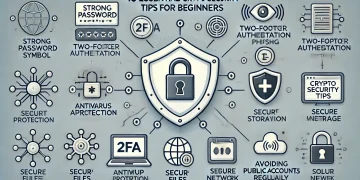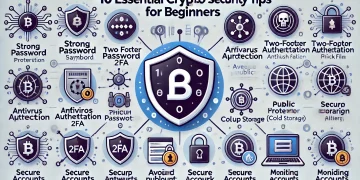Initial Coin Offerings (ICOs) and Initial Exchange Offerings (IEOs) have become popular methods for blockchain projects to raise capital. While these fundraising mechanisms offer exciting opportunities for investors, they also come with significant risks. This guide aims to provide a comprehensive framework for evaluating ICOs and IEOs, helping investors make informed decisions in the volatile world of cryptocurrency investments.
Understanding ICOs and IEOs
Before diving into evaluation methods, it’s crucial to understand what ICOs and IEOs are and how they differ.
Initial Coin Offerings (ICOs)
An ICO is a fundraising method where a new cryptocurrency project sells a portion of its tokens to early investors, typically in exchange for established cryptocurrencies like Bitcoin or Ethereum. ICOs are similar to Initial Public Offerings (IPOs) in traditional finance but are largely unregulated and carry higher risk.
Initial Exchange Offerings (IEOs)
An IEO is a variation of an ICO where the fundraising is conducted through a cryptocurrency exchange. The exchange acts as a middleman between the project and investors, providing a level of vetting and security. IEOs typically have a higher barrier to entry for projects, as they must meet the exchange’s listing criteria.
Key Factors to Evaluate
When assessing an ICO or IEO, consider the following crucial factors:
1. Team and Advisors
The team behind a project is often the most critical factor in its success or failure.
What to look for:
- Experience and expertise in blockchain technology, cryptocurrency, and relevant industries
- Track record of successful projects or businesses
- Diversity of skills within the team (technical, business, marketing, etc.)
- Presence of well-known advisors in the cryptocurrency or relevant industry spaces
Red flags:
- Anonymous team members
- Lack of relevant experience or expertise
- Inconsistencies in team members’ backgrounds
How to verify:
- Research team members on professional networks like LinkedIn
- Look for team members’ contributions to other projects or academic papers
- Check if advisors are actually involved by reaching out to them directly
2. Project Concept and Use Case
The underlying idea and its potential real-world application are fundamental to a project’s value.
What to evaluate:
- Clarity and feasibility of the project’s concept
- Unique selling proposition (USP) and competitive advantage
- Market need for the proposed solution
- Potential for widespread adoption
Questions to ask:
- Does the project solve a real problem?
- Is blockchain technology necessary for this solution?
- How does it compare to existing solutions, both blockchain-based and traditional?
3. Technology and Development Progress
The technical foundation and development status of a project can indicate its viability and time to market.
Factors to consider:
- Quality and completeness of the technical whitepaper
- GitHub repository activity and code quality
- Development roadmap and milestones achieved
- Smart contract audits (if applicable)
Red flags:
- Lack of technical details or whitepaper
- Inactive or non-existent GitHub repository
- Unrealistic development timelines
Verification steps:
- Review the technical whitepaper with someone knowledgeable in blockchain technology
- Check GitHub commits and contributors
- Look for third-party code audits or security assessments
4. Tokenomics
The economic model of the token is crucial for understanding its potential value and sustainability.
Key aspects to analyze:
- Token distribution (team, advisors, public sale, etc.)
- Vesting schedules and lock-up periods
- Token utility within the ecosystem
- Total supply and inflation/deflation mechanisms
Questions to consider:
- Is the token necessary for the project’s functionality?
- How does the token generate value for holders?
- Are there mechanisms to prevent excessive dilution?
5. Legal and Regulatory Compliance
With increasing regulatory scrutiny, legal compliance is becoming more critical for project longevity.
Areas to examine:
- Legal structure of the project entity
- Compliance with relevant securities laws
- KYC/AML procedures for token sales
- Jurisdiction-specific regulations
Red flags:
- Lack of clear legal entity or structure
- Promises of returns on investment (potential security classification)
- Exclusion of investors from certain countries without clear reasons
6. Market and Competition
Understanding the market landscape helps in assessing the project’s potential for success.
Factors to analyze:
- Market size and growth potential
- Existing competitors (both blockchain and traditional)
- Barriers to entry and competitive advantage
Research methods:
- Industry reports and market analysis
- Competitor whitepapers and websites
- Expert opinions and industry forums
7. Community and Social Media Presence
A strong and engaged community can be indicative of a project’s potential success.
What to look for:
- Size and activity of Telegram, Discord, or other community channels
- Quality of discussions in these channels
- Twitter followers and engagement rates
- Presence on cryptocurrency forums like BitcoinTalk
Red flags:
- Overly promotional content without substantial discussions
- Banned or limited discussions about token price
- Use of bots to inflate follower counts or engagement
8. Partnerships and Backing
Strategic partnerships and backing from reputable entities can lend credibility to a project.
Aspects to consider:
- Relevance and reputation of partners
- Nature of partnerships (technical, business, advisory)
- Involvement of venture capital firms or notable investors
Verification steps:
- Check partner websites for reciprocal announcements
- Research the terms and depth of partnerships
- Verify investor involvement through official channels
9. Fundraising Structure and Token Sale Details
The specifics of the token sale can impact both short-term and long-term token value.
Key factors:
- Funding goal and cap
- Token price and potential bonuses
- Accepted currencies
- Sale duration and structure (public sale, private sale, etc.)
Red flags:
- Unrealistic funding goals
- Excessive bonuses that could lead to early dumping
- Lack of clear information about token sale specifics
10. For IEOs: Exchange Reputation and Track Record
In the case of IEOs, the reputation of the hosting exchange is crucial.
What to assess:
- Exchange’s history and reputation
- Past IEO performance on the exchange
- Due diligence process for listed projects
Research methods:
- Review exchange ratings and user feedback
- Analyze performance of past IEOs on the platform
- Check regulatory compliance of the exchange
Due Diligence Process
To thoroughly evaluate an ICO or IEO, follow these steps:
- Initial Screening:
- Review the project website and whitepaper
- Check social media presence and community engagement
- Look for red flags or warning signs
- Deep Dive:
- Analyze the team’s background and experience
- Evaluate the technology and development progress
- Assess the market potential and competition
- Review tokenomics and economic model
- Legal and Compliance Check:
- Understand the legal structure and jurisdiction
- Verify compliance with relevant regulations
- Check for proper KYC/AML procedures
- Community and Expert Opinions:
- Engage with the project’s community
- Seek opinions from cryptocurrency experts and influencers
- Look for independent reviews and analyses
- Financial Analysis:
- Evaluate the token sale structure and terms
- Assess the project’s funding needs and use of funds
- Consider potential return on investment and risks
- Final Assessment:
- Weigh the pros and cons
- Consider how the investment fits into your overall portfolio
- Make an informed decision based on your risk tolerance
Risk Management Strategies
Investing in ICOs and IEOs is high-risk. Consider these risk management strategies:
- Diversification: Don’t put all your funds into a single ICO or IEO.
- Investment Limits: Only invest what you can afford to lose.
- Long-term Perspective: Be prepared to hold tokens for an extended period.
- Stay Informed: Keep up with project developments and market news.
- Secure Storage: Use reputable wallets to store your tokens securely.
Red Flags and Warning Signs
Be vigilant for these common red flags:
- Promises of guaranteed returns or unrealistic profit projections
- Lack of a clear use case for blockchain technology
- Excessive marketing with little substance
- Copy-pasted whitepapers or code
- Team members with fake or unverifiable credentials
- Lack of transparency about token distribution or use of funds
- Aggressive or pushy sales tactics
Conclusion
Evaluating ICOs and IEOs requires a comprehensive approach that considers multiple factors. While the potential for high returns exists, so do significant risks. By following this guide and conducting thorough due diligence, investors can make more informed decisions in the cryptocurrency market. Remember that the cryptocurrency space is highly volatile and rapidly evolving – always stay informed and be prepared for the possibility of losing your investment.
Frequently Asked Questions (FAQs)
- Q: What’s the main difference between an ICO and an IEO? A: The main difference is that an IEO is conducted through a cryptocurrency exchange, which acts as an intermediary and provides a level of vetting. ICOs are typically run directly by the project team without this intermediary.
- Q: Are ICOs and IEOs legal? A: The legality of ICOs and IEOs varies by jurisdiction. Many countries are still developing regulations around these fundraising methods. It’s crucial to understand the legal status in your country before participating.
- Q: How can I participate in an ICO or IEO? A: For ICOs, you typically need to register on the project’s website and follow their instructions for participation. For IEOs, you need to have an account on the hosting exchange and follow their specific process for the token sale.
- Q: What’s a whitepaper, and why is it important? A: A whitepaper is a document that outlines the technology, goals, strategy, and team behind a cryptocurrency project. It’s crucial for understanding the project’s value proposition and technical feasibility.
- Q: How important is the team behind a project? A: The team is one of the most critical factors. Their experience, skills, and track record can be strong indicators of a project’s potential for success.
- Q: What are some common red flags to watch out for? A: Common red flags include anonymous team members, promises of guaranteed returns, lack of a clear use case, copied whitepapers or code, and excessive marketing without substantial development.
- Q: How can I verify the claims made by a project? A: You can verify claims by researching team members’ backgrounds, checking GitHub for development activity, looking for third-party audits, and reaching out to listed partners or advisors directly.
- Q: What’s the importance of tokenomics in evaluating an ICO or IEO? A: Tokenomics helps you understand how the token will function within the project’s ecosystem, its potential value, and factors that might affect its price in the future.
- Q: Are projects that conduct IEOs less risky than those doing ICOs? A: While IEOs go through some vetting by the exchange, they’re not necessarily less risky. The exchange’s reputation and track record should be part of your evaluation process.
- Q: How much should I invest in an ICO or IEO? A: Only invest what you can afford to lose. These investments are high-risk, and there’s a possibility of losing your entire investment.
- Q: What’s a soft cap and hard cap in token sales? A: The soft cap is the minimum amount of funds a project aims to raise, below which the project may not proceed. The hard cap is the maximum amount the project will accept in the token sale.
- Q: How long does it typically take for tokens to be distributed after an ICO or IEO? A: Token distribution timelines vary by project. It can be immediate or take several weeks. The distribution schedule should be clearly communicated by the project team.
- Q: What’s a vesting period, and why is it important? A: A vesting period is a time during which tokens are locked and cannot be sold. It’s important because it can prevent immediate selling pressure and demonstrate the team’s long-term commitment.
- Q: How can I assess the market potential of a project? A: Evaluate the problem the project is solving, the size of the target market, existing competitors, and the project’s unique value proposition.
- Q: What role do smart contract audits play in evaluating a project? A: Smart contract audits can reveal potential security vulnerabilities or flaws in the project’s code. A positive audit from a reputable firm can increase confidence in the project’s technical foundation.
Remember, while this guide provides a framework for evaluation, cryptocurrency investments remain high-risk. Always conduct your own research and consider seeking advice from financial professionals before making investment decisions.






























